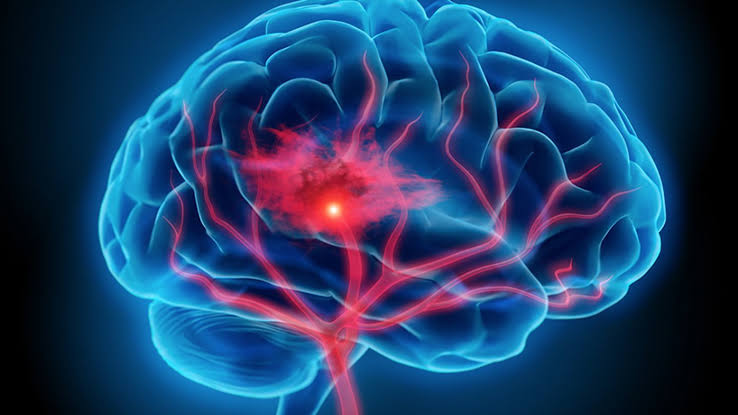Health Desk
Sandeep Dhand Ludhiana
Introduction : A brain attack, commonly known as a stroke, is a medical emergency that occurs when the blood supply to part of the brain is interrupted or reduced, depriving brain tissue of oxygen and nutrients. This can lead to brain cells dying within minutes, making timely treatment crucial. Strokes are a leading cause of disability and death worldwide, underscoring the importance of understanding their symptoms, causes, and preventive measures.
Types of Strokes
There are two main types of strokes:

- Ischemic Stroke : This is the most common type, accounting for about 87% of all strokes. It occurs when a blood clot blocks or narrows an artery leading to the brain. This blockage can be due to a thrombus (a clot that forms in one of the brain’s arteries) or an embolus (a clot that forms elsewhere in the body and travels to the brain).
- Hemorrhagic Stroke : This type occurs when a blood vessel in the brain bursts, leading to bleeding in or around the brain. Hemorrhagic strokes can result from conditions such as high blood pressure, aneurysms, or arteriovenous malformations.
Symptoms of a Brain Attack
Recognizing the signs of a stroke and seeking immediate medical help can save lives and improve recovery outcomes. Common symptoms include:
Sudden numbness or weakness in the face, arm, or leg, especially on one side of the body.
Confusion, trouble speaking, or difficulty understanding speech.
Sudden trouble seeing in one or both eyes.
Sudden trouble walking, dizziness, loss of balance, or lack of coordination.
Sudden severe headache with no known cause.
Causes and Risk Factors
Several factors can increase the risk of stroke, including:
High Blood Pressure : The leading cause of strokes, as it can damage blood vessels over time.
Diabetes : High blood sugar levels can damage blood vessels.
Heart Disease : Conditions such as atrial fibrillation can lead to blood clots forming in the heart and traveling to the brain.
Smoking : Damages blood vessels and increases blood pressure.
High Cholesterol : Can lead to plaque buildup in blood vessels, restricting blood flow to the brain.
Obesity : Increases the risk of developing other risk factors such as high blood pressure, diabetes, and heart disease.
Age and Family History : The risk of stroke increases with age and having a family history of strokes.
Prevention
While some risk factors, like age and family history, cannot be changed, many lifestyle modifications can significantly reduce the risk of a brain attack:
Maintain Healthy Blood Pressure : Regularly monitor and manage blood pressure through diet, exercise, and medication if necessary.
Control Diabetes : Keep blood sugar levels in check with diet, exercise, and medication.
Healthy Diet : Eat a balanced diet rich in fruits, vegetables, whole grains, and lean proteins while limiting saturated fats, cholesterol, and sodium.
Regular Exercise : Aim for at least 150 minutes of moderate aerobic activity or 75 minutes of vigorous activity each week.
Avoid Smoking : Seek help to quit smoking, which can dramatically reduce stroke risk.
Limit Alcohol : Consume alcohol in moderation, if at all.
Weight Management : Maintain a healthy weight to reduce the risk of developing other risk factors.
Conclusion : A brain attack is a life-threatening event that requires immediate medical attention. By recognizing the symptoms early and understanding the risk factors, individuals can take proactive steps to reduce their chances of experiencing a stroke. Adopting a healthy lifestyle and managing existing health conditions can play a significant role in stroke prevention, ultimately saving lives and enhancing the quality of life.